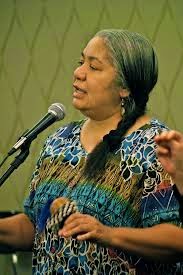This summer has been amazing. The running about. The nine thousand miles I put on my car. The insane amount of time I logged on planes.
I have had the most amazing guest bloggers in this space all summer. I learn so much by listening to and reading about other artists. If you want to find out who was here and what they had to say, go to the Guest Artist button on the menu at the top of the blog.
Now, on to current matters. I was at the National Storytelling Network Conference last week. Fabulous. I may or may not write about it since so many other people have. I'll link over to stuff when I'm not feeling quite as lazy as I am today.
Yes, today, I am lazy. Why? Well, because my summer is officially done!
I have two weeks to just come down off the travel high and spend some time with my family.
I do have some goodies in waiting, though.
My last two guests in the summer series are yet to come and they are wonderful.
On August 7th, you will encounter a woman I respect the heck out of who is also a wonderful author and teaching artist who is forever trying new things. She's done improv work, we've seen her in costume at the Renaissance Fair, and she's just gotten into throwing pots. Some of her books include The O'Dwyer and Grady series.
 |
| I actually have a credit for helping her solve one of the mysteries in this series! |
 |
| She writes for audiences both old and young |
 |
| Did I mention she was an investigative journalist? |
Ladies and Gentlemen, I give you Eileen Heyes!
 |
| Eileen Heyes |
Eileen will share some thoughts about creating biographies for your fictional characters to give them more depth. Well worth the read.
On August 14th, my absolute last guest of the summer is a woman who became one of my college 'mothers', gave me my very first professional job right out of school, let me crash on her couch, gave me love life advice, has written some fabulous books, is a phenomenal storyteller, is a Dr., a professor, writes reviews of children's books, is a librarian par excellence, and has had my back so many times it isn't even funny.
 |
| She's got books on telling stories |
 |
| I love this book. In fact, I tell this book! (With permission of course!) |
 |
| I tell this one as well! |
I am speaking now of my dear friend and force of nature, Janice Del Negro.
 |
| Janice Del Negro |
The final post in my summer season is from the first person who put her money on the line and sent me out to meet the public.
Her piece is about the power of using folk and fairy tales with adolescents in the classroom, and it is, like everything she does, exquisite.
So, these will be the last two and then I will go back to irregularly scheduled programming in this space.
Happy Summertime!





















